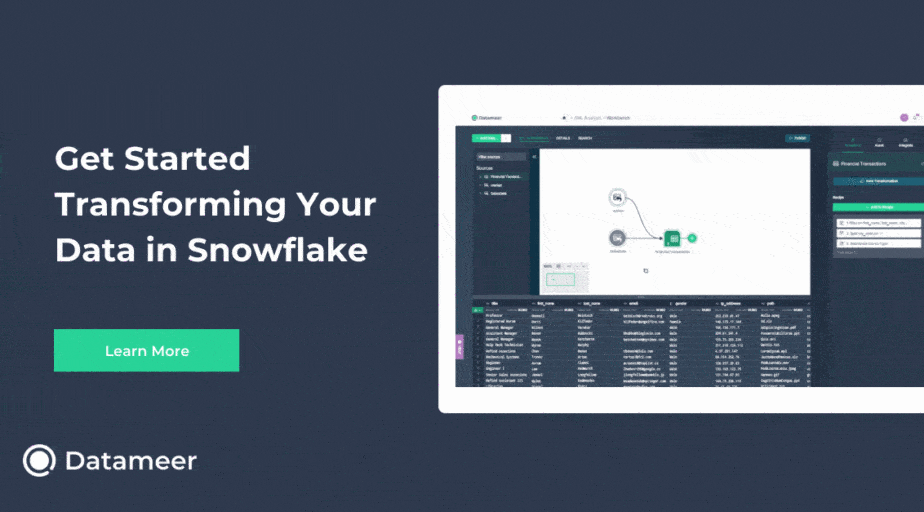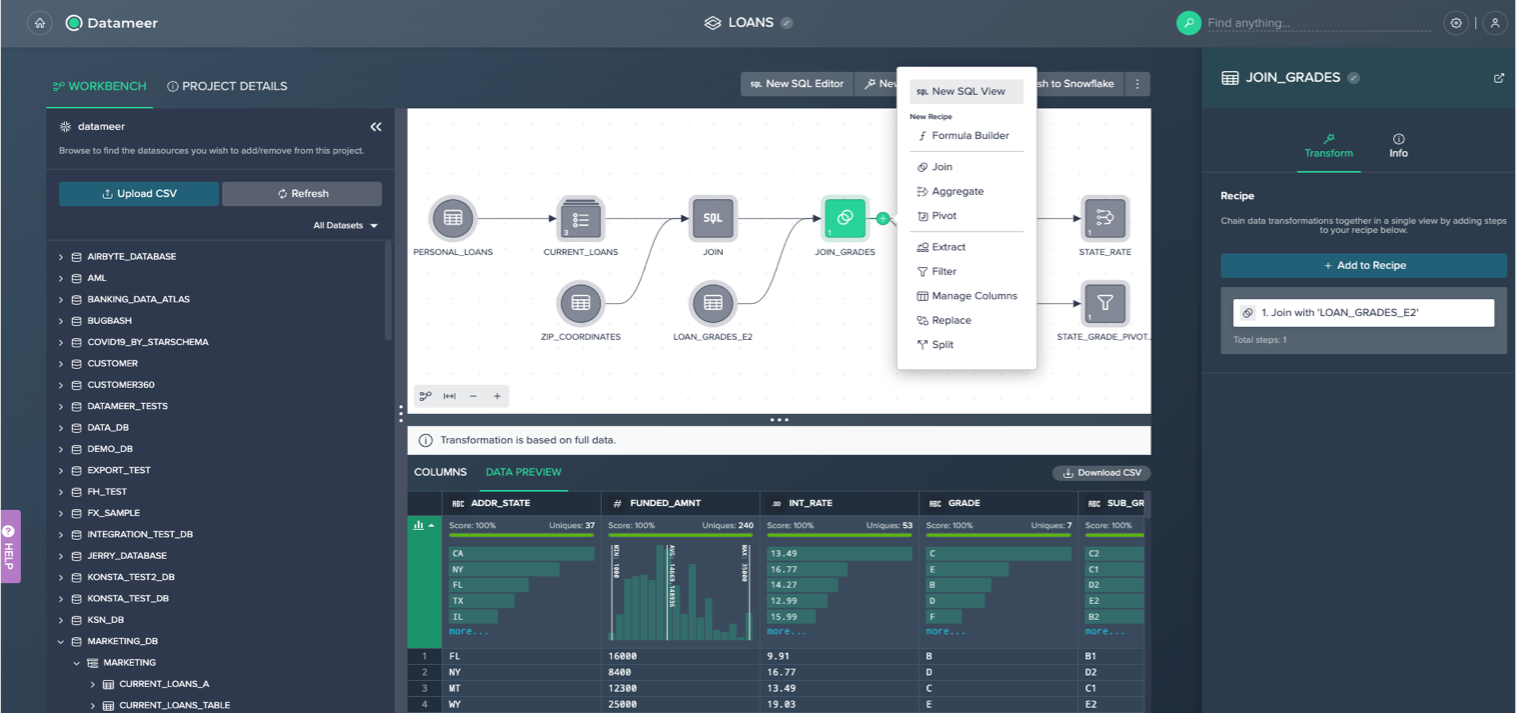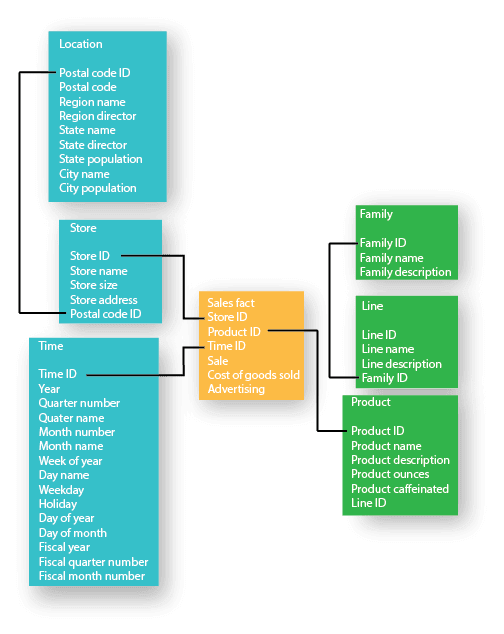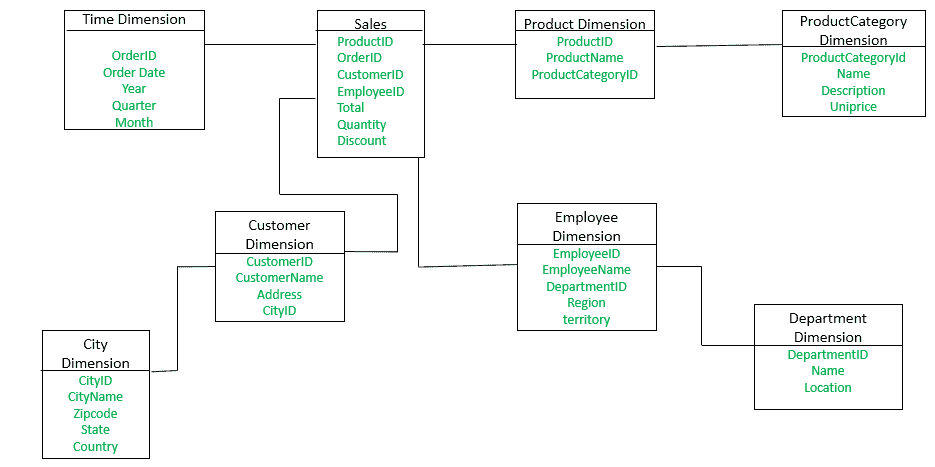Snowflake vs Star vs Wide-Table Schema: A Performance Comparison
- How-Tos FAQs
- August 11, 2021

Let’s look at a performance comparison of Snowflake vs Star vs Wide-Table Schema. Most databases have a schema that defines the structure of the data stored in the database.
The schema also defines the relationships between the different tables in the database, and it’s essential to ensure the integrity of the data. For example, if a schema defines that a particular field can only contain integers, then any data entered into that field that is not an integer will be rejected.
In a traditional star schema, data is organized into a central table, with smaller tables linking to it. In contrast, Wide-Table stores data in a columnar format, allowing faster data retrieval and analysis.
Let’s see the common types of schemas — star schema and wide-table schema and how they differ from the Snowflake schema.
But first… Datameer
Datameer can complete all the data modeling we talked about above. Each transformation we’ve done can be created as a no-code recipe or a series of operations.

One nice thing about Datameer is that the transformation steps are laid out graphically, so it’s not necessary to know SQL to walk through the transformation recipe with any of a project’s stakeholders.
Datameer also makes maintenance easier. You don’t have to sift through a lot of code if you want to add a transformation to the recipe or modify an existing transformation.
Try Datameer’s free 14 day trial today!
Star Schema

Traditional star schema relies on normalized data, storing data in separate tables and then linked together through foreign keys. This approach can lead to better performance because it minimizes the number of joins that need to be executed. However, it can also be more complex to query, which can offset any performance gains.
Star schema relies on normalized data, storing data in separate tables and linked together through foreign keys. Star schemas consist of one or multiple “fact tables” that offer the simplest structure for organizing data into a data warehouse. The fact tables are connected to a series of “dimension tables.” To understand star schemas or Snowflake schemas—it’s essential to take an in-depth look at fact tables and dimension tables.
Wide table schema
A wide-table schema is a data model in which data is stored in a table in a large number of columns. The columns can be of any data type, and the table can be divided into partitions to improve performance. Wide-table schemas are often used for big data applications. Wide-table schemas are advantageous because they can store a large amount of data in a single table. This makes it easy to query the data and perform joins between tables. Additionally, the column data can be partitioned into separate tables to improve performance.
On the other hand, a wide-table design uses denormalized data, which means that all data is stored in a single table. This can lead to more straightforward queries, but more data needs to be read from storage, which can impact performance. There are some disadvantages to using a wide-table schema. The table can be challenging to query if the number of columns is significant, and it can be difficult to maintain the data if the number of columns is large. Additionally, the table can be challenging to load into memory.
Snowflake Schema

The Snowflake schema is a variant of star schema. Unlike the star schema, where the centralized fact table is connected to multiple dimensions, dimensions are present in a normalized form in multiple related tables in Snowflake schema. The primary benefit of the Snowflake schema is that it uses smaller disk space.
However, due to multiple tables, there is a reduction in query performance. Users’ primary challenge while using the Snowflake Schema is that they have to perform more maintenance because of the more lookup tables.
Conclusion
It depends on your application and how you query your data when you are comparing Snowflake vs Star vs Wide-Table Schema. You can prefer the Snowflake or wide table schema when the dimension table is relatively significant to reduce the data size.
However, choosing the star schema would help when the dimension table has fewer rows. The Snowflake schema options also contain more than one dimension table for each dimension, depending on the data, unlike star schema, that only has one dimension table.
Data modeling and transformation tools are now the backbone of your modern analytics process. Having the proper tools that involve your entire team will create agility in your process.


